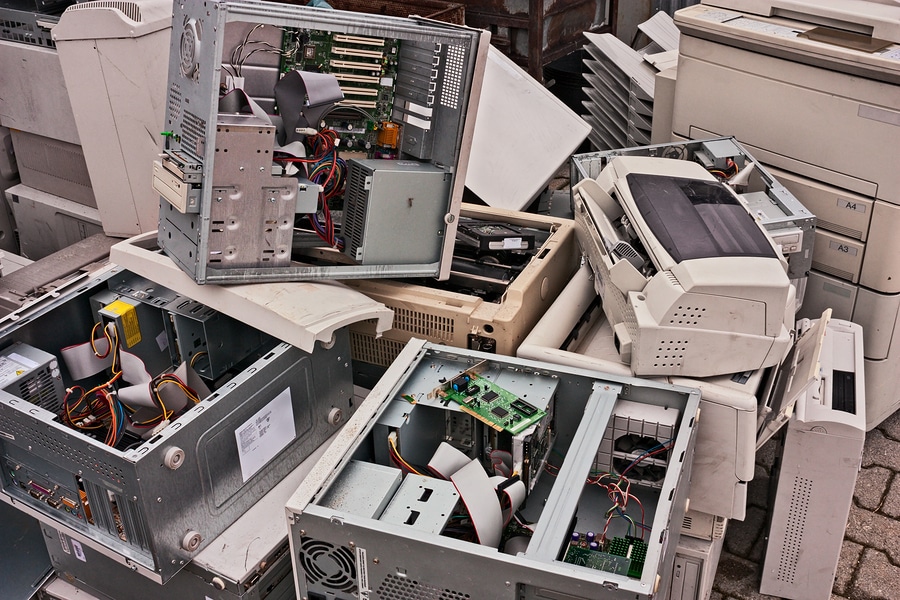How to Properly Dispose of IoT Smart Devices

The Internet of Things (IoT) refers to the interconnected network of objects ranging from home appliances and fitness trackers to entire vehicles, all of which incorporate some form of internet connectivity that allows them to collect and exchange data.
While IoT devices have the potential to revolutionize the way we live and work by enabling greater automation and improving efficiency, there are also some very real concerns about their data privacy and security measures, as the collection and use of data by IoT devices can potentially expose sensitive user information to unauthorized or malicious actors.
These security risks make disposing of IoT devices a challenge, as just throwing them away isn’t enough, and doing so might even run afoul of state and federal regulations. With that being said, how can old tech be retired without compromising personal information?
Wiping User Data
When an IoT smart device has reached the end of its lifespan, the first step that should always be taken is to perform a factory reset on it as a means of wiping any and all personal data from it and restoring it to its original settings.
If the device used a SIM card or any form of external storage media, those should also be removed and securely disposed of separately.
As you complete these processes, it’s also a great time to delete or deactivate any online accounts associated with the device, as well as to revoke any permissions and pairings with other devices that could allow for back-door access to your data.
Recycling
Once a device has been properly wiped clean, the next question that arises is what to do with the physical object itself. In many cases, these devices are built using precious metals such as gold, silver, copper, platinum, and palladium, which can each be recycled to recoup some of the costs of the equipment and reduce the environmental impact of its disposal.
If you decide to take this route, ensure that your devices are recycled at a certified facility that adheres to security guidelines, such as guarantees not to send the device overseas for processing or to leave any components in a landfill. For added peace of mind, professional recycles should also provide an established, documented chain-of-custody trail once the device is turned over to them. Certifications like R2 and e-Stewards are third-party organizations that make sure electronics recyclers are practicing what they preach and following stringent security and environmental standards.
Refurbishment
If your device is still in working order or requires minimal repairs to restore its functionality, it may be possible to extend its lifespan through refurbishment. After being wiped, cleaned, repaired, and tested, devices can be remarketed, improving value recovery and promoting sustainability without the risk of compromising user data.
If you choose this route, industry certifications such as NAID, R2 and eStewards all ensure the resale vendor you choose has properly destroyed data to keep you protected. They also make sure the business is handling the non-reusable parts the right way, and can’t get you in trouble if they sell the “good” stuff but dump the “bad”.
Physical Destruction
In some cases, the smartest option for ensuring that sensitive data doesn’t fall into the wrong hands is to physically destroy the device. It’s a widely accepted standard for security-conscious organizations around the world, and it is especially recommended for businesses that are at increased risk of potential damage to their revenue and reputation.
If you choose this option, look for industry certifications such as NAID, R2 and eStewards that guarantee your devices will be fully destroyed with proof. All shredded remnants must be responsibly handled as well under these types of certifications.
Choose SEAM for the Full Package
If you are located in South Dakota or North Dakota, SEAM offers certified electronics recycling, along with fast, convenient hard drive and solid-state drive shredding services in full accordance with strict NIST Special Publication 800-88 (Revision 1) standards, as well as both on-site and off-site shredding of other storage devices such as CDs, DVDs, floppy disks, cell phones, and PDAs. SEAM also offers equipment resale for those looking to get value back on their devices.
SEAM manages the risks so you don’t have to, so get in touch with us today to find out how we can serve you.
SEAM provides IT recycling and data destruction services including onsite shredding and hard drive wiping to South Dakota, North Dakota, Minnesota, Iowa, and Nebraska.
Schedule a pickup or contact us for more information.





